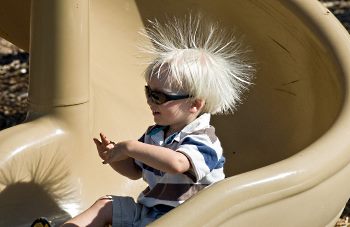property>electric charge
What Is Electric Charge?

In physics, electric charge is a fundamental property of certain subatomic particles that is conserved and determines how these particles interact electromagnetically. All electrically charged matter creates electromagnetic fields and is influenced by them. If an electric charge is moving and interacting with an electromagnetic field, an electromagnetic force is produced. This resulting force is considered to be one of the four fundamental forces at work in our universe. The SI unit for electric charge is the coulomb, named after French physicist Charles-Augustin de Coulomb.
An electric charge on a body can be either positive or negative. Two bodies with the same electric charge will be influenced by a mutually repulsive force while two bodies with opposite charges will be influenced by a mutually attractive force. Classical electrodynamics explains how charged bodies interact, assuming one is working with bodies large enough to make quantum effects negligible.
Throughout the twentieth century, many experiments have demonstrated that electric charge is quantized. That is to say, electric charge is not distributed along a continuum of possible charges that can be increased by any amount. In fact, the minimum amount that can be added to an already existing electric charge is the amount of the elementary charge, e, and it amounts to 1.602 x 10-19 coulombs. In an atom, the proton has a positive charge of e while the electron has a charge of -e. The field of quantum electrodynamics is the study of how these charged particles interact and are mediated by photons.
In everyday life, static electricity becomes a reality when you walk across a carpet on a cold January morning only to get an annoying shock when you touch the door handle. The shock you just received is an electrostatic discharge that occurs because you are effectively building up a charge difference between yourself and the door handle. The discharge occurs as a way of bringing the total electric charge in the system back to equilibrium. Though one would think that an electric current is flowing through oneself during this process, the length of time of the discharge is too short for this to be true.
An electric current is a flow of charge across an electrically conductive body of some kind. It is also taken to be the time derivative of charge, written as:
I = dQ/dt
If one were to take the time integral of both sides of the above equation with respect to a definite period of time, one would also be able to calculate a total charge, Q, built up for that given timeby the integral:
Q = ∫ I dt
where the integral is the definite integral from tinitial to tfinal. Such an equation might be used for determining the total charge built up across the surface of a capacitor for a given current and time interval.